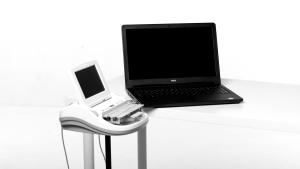
“Legal proceedings can get heated with people talking over one another, or you may have a witness that mumbles or has a strong accent,” says Sandi Wilson, CSR (CA), FPR, CER, CDR, senior director of litigation technology. “You must have a person there to keep decorum, administer an oath, mark exhibits, identify speakers and ask for questions to be repeated if needed, among other responsibilities. Technology is always going to need that human touch for a 100% verbatim record.”
The need for this human element demonstrates that it would be impossible to fully automate the court reporting industry. However, across the nation, there is a critical shortage of stenographic reporters which only continues to worsen year after year, due to low enrollments at stenography schools and retiring reporters leaving the field. These two factors make it harder and harder to meet the growing demand for stenographic reporters.
This is where litigation technology and digital court reporters can assist and serve as a way to supplement the shortage. When digital court reporting was first introduced, many were unsure about it, but they have slowly started to embrace the new technology and new type of (human) court reporter.
“There is a misconception of what digital court reporting actually is and what it has to offer; I think early on, some of the methods were not as advanced as they are today, and the reporters were not always using quality equipment and technology, so opinions were formed based on the earlier methods of digital reporting,” says Wilson. “Today, litigation technology is state-of-the-art. The digital reporting method is no longer the lesser method of court reporting; it’s simply a different method of court reporting with the end product being a verbatim transcript.”
As litigation technology continues to expand, court reporters have access to new programs and functions that they may not have had before.
“Technology is only going to make a court reporter’s job easier; with artificial intelligence and automatic speech recognition programs, it helps reporters work smarter, not harder,” says Wilson. “For example, a reporter or transcriber manually typing up a proceeding will take longer than a reporter or transcriber using ASR or AI to make the first pass on creating the transcript. With ASR and AI translation in the 80-to-90% range, the reporter or transcriber can scope and proofread the proceeding, bringing it to 100% accuracy in almost half the time.”
Ultimately, Wilson believes that the best-case scenario for the court reporting industry is a combination of amazing technology and a well-trained professional.
“Rather than focusing on the method of court reporting, we need to focus on the professional behind the method,” explains Wilson. “If a reporter has a great work ethic, is trained well, keeps up with current technology and is knowledgeable of legal proceedings and decorum, they will have job security for the rest of their career regardless of the reporting method they use to capture the record.”
To learn more about digital court reporting, check out our informational video.
